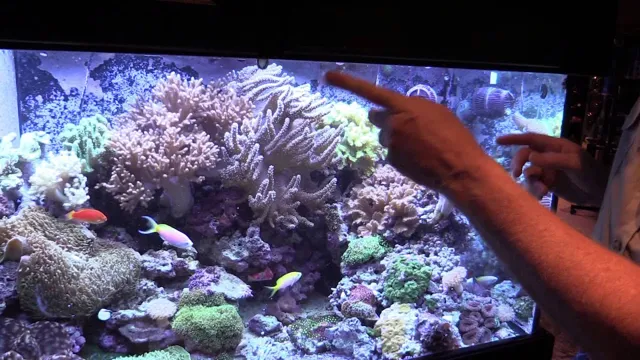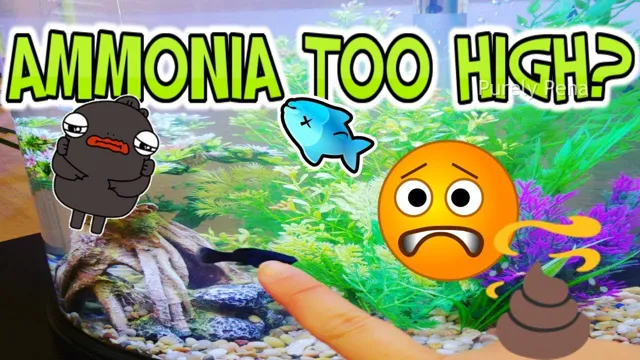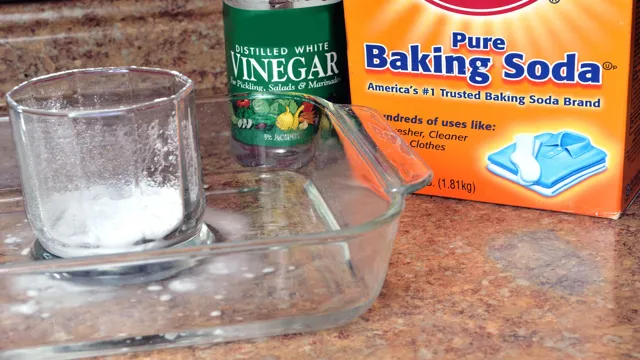If you love the unbridled beauty of the undersea world, then you should consider setting up a saltwater aquarium. There’s no denying the fact that this hobby allows you to bring a piece of the ocean right into your home. However, maintaining a saltwater fish aquarium can be a little challenging initially.
After all, you’re dealing with live organisms that require consistent care and attention. But don’t let that scare you away – once you get the hang of it, it’s an incredibly rewarding experience that can bring years of joy. Like any hobby, there are certain things you need to know to make keeping saltwater fish a success.
This will not only ensure the survival of your marine life but also help you enjoy the experience without feeling overwhelmed. There are many factors to consider when it comes to setting up and maintaining a saltwater aquarium – water composition, lighting, temperature, etc. Knowing the basics of how to set up and care for your fish will enable you to create an underwater oasis for your finned friends that they will call home.
In this blog, we’ll guide you through the steps you need to take to set up a saltwater aquarium, including choosing and preparing the right tank, selecting compatible fish species, maintaining proper water parameters, and lighting. We’ll also provide tips on daily care, such as feeding and cleaning, and walk you through troubleshooting common problems. So if you’re ready to dive into the world of saltwater aquariums, let’s get started.
Understanding Saltwater Aquarium Basics
Maintaining a saltwater fish aquarium can be an exciting and rewarding experience, but it also comes with a lot of responsibility. Understanding the basics is crucial to keeping your fish and other marine life healthy. One of the most important things to consider is water quality.
You’ll need to monitor the pH level, salinity, and temperature of the water regularly to prevent any imbalances that can be harmful to your fish. You should also invest in a high-quality filtration system to keep the water clean and free from any harmful bacteria. Feeding your fish a well-balanced diet and providing ample hiding places and decorations for them to explore is also essential.
Regular water changes, testing, and maintenance should be performed to keep your aquarium in pristine condition. Remember, a healthy and thriving aquarium requires patience and dedication, but the end result is well worth the effort.
Choosing the Right Equipment
When it comes to setting up a saltwater aquarium, choosing the right equipment is crucial for the health and success of your aquatic inhabitants. First and foremost, you’ll need a tank that is appropriately sized for the type and number of fish you plan to keep. You’ll also need a reliable filtration system to keep the water clean and clear, as well as a heater to maintain a consistent water temperature.
Lighting is another important consideration, as different types of marine life require different levels of light and spectrum. Additionally, you may want to invest in a protein skimmer to remove excess waste and a powerhead to ensure adequate water flow. When selecting equipment, it’s essential to do your research and choose high-quality, durable products that will withstand the demands of a saltwater environment.
By choosing the right equipment from the start, you’ll set your aquarium up for success and create a healthy, thriving underwater ecosystem.

Water Quality and Maintenance
Saltwater aquariums are a great way to add some marine life to your home, but it’s essential to understand the basics of water quality and maintenance to ensure the health of your aquatic pets. One of the most important aspects of a saltwater aquarium is the water itself. It’s vital to maintain the correct salinity levels, which can be achieved using a hydrometer or refractometer.
Regular water changes of around 10% every two weeks are also crucial to keep the water chemistry stable. Filtration systems are also a key factor in maintaining water quality, with options ranging from protein skimmers to biological filters. Regularly testing the water for pH, ammonia, and nitrite levels can help you identify any issues before they become serious problems.
With proper care and attention to water quality, your saltwater aquarium can become a thriving ecosystem for your marine friends.
Feeding and Nutrition for Saltwater Fish
Maintaining a saltwater fish aquarium requires a lot of attention to detail, and feeding and nutrition are at the top of the list. Saltwater fish have specific dietary requirements, which can vary depending on the species. A good rule of thumb is to offer a varied diet of high-quality pellets, frozen or live foods, and occasional treats such as algae sheets or brine shrimp. (See Also: How to Clean Aquarium Plants Without Bleach: A Comprehensive Guide)
It’s important to avoid overfeeding, which can lead to poor water quality and health problems for your fish. It’s also crucial to monitor the water parameters to ensure that the fish are receiving the proper nutrients and not being exposed to harmful toxins. With proper feeding and care, your saltwater fish will thrive in their beautiful aquatic home.
Types of Fish Food
When it comes to feeding and nutrition for saltwater fish, there are a few things to consider. One of the most important considerations is the type of fish food you are giving your fish. There are several types of fish food available in the market, including flakes, pellets, frozen, and live food.
Flakes and pellets are the most common types of fish food and are suitable for most saltwater fish. However, some fish have specific dietary requirements and may need frozen or live food. When choosing a fish food, it’s essential to read the label to ensure it contains all the necessary vitamins and minerals your fish need.
Keep in mind that overfeeding your fish can lead to health problems and a dirty aquarium. It’s best to feed your fish small amounts multiple times a day instead of one large meal. With the right type of fish food and proper feeding frequency, your saltwater fish can live a healthy and happy life.
Schedule and Quantity of Feeding
When it comes to feeding and nutrition for saltwater fish, it’s important to establish a schedule and quantity of feeding that works for both you and your fish. Generally, it’s recommended to feed your fish small amounts of food once or twice a day, depending on the species. You should also take into consideration the size and age of your fish, as well as their activity level and feeding behavior.
It’s important not to overfeed your fish, as this can lead to health problems such as obesity, poor water quality, and even death. On the other hand, underfeeding your fish can also cause health issues. It’s all about finding the right balance.
As with any pet, it’s important to monitor their behavior and adjust feeding accordingly. So, pay attention to your fish’s appetite and adjust their feeding schedule and quantity as needed. Remember, a well-fed and healthy fish is a happy fish!
Aquarium Cleaning and Upkeep
Keeping a saltwater fish aquarium can be a rewarding experience, but it requires proper upkeep to keep your fish healthy and happy. One of the most critical aspects of maintenance is cleaning your aquarium. Regularly cleaning the tank and its accessories can help prevent the buildup of harmful chemicals, waste, and algae, which can harm your fish.
Cleaning the aquarium involves many steps, including vacuuming the rocks, changing the water, and wiping the walls. You’ll also want to ensure that temperature and salinity levels remain consistent. Additionally, it’s essential to monitor equipment like filters, skimmers, and lighting fixtures for wear and tear.
By taking the time to maintain your saltwater aquarium regularly, you can provide a safe and healthy environment for your fish and ensure that they thrive for years to come.
Regular Water Changes
When it comes to maintaining a healthy and thriving aquarium, there is one crucial task that every hobbyist must commit to: regular water changes. Over time, the water in your aquarium can become contaminated with waste, food debris, and other pollutants that are harmful to your fish and aquatic plants. That’s why it’s essential to remove a portion of the water on a regular basis and replace it with fresh, clean water.
A general rule of thumb is to change about 10-15% of the water each week, but the frequency and amount can vary depending on the size of your tank and the number of inhabitants. By doing these water changes, you help reduce the build-up of harmful toxins and ensure that your aquarium stays clean and healthy. Don’t neglect this critical aspect of aquarium upkeep – your fish will thank you for it!
Cleaning the Tank
Cleaning your aquarium is a crucial part of keeping your aquatic pets healthy and happy. Regular cleaning and upkeep ensures that your tank remains a safe environment for your fish to thrive in. When it comes to cleaning your tank, there are a few key things you need to keep in mind. (See Also: How to Clean Coral for Freshwater Aquarium: Step-by-Step Guide)
Firstly, you’ll need to remove any waste or debris from the bottom of the tank using a siphon. Secondly, it’s important to clean the sides of the tank using a scraper or algae pad to remove any build-up. Lastly, a water change is vital to ensure that the water quality stays optimal, allowing your fish to stay healthy.
Remember, regular tank maintenance and cleaning is essential for the well-being of your aquatic pets, so be sure to stay on top of it!
Dealing with Common Issues
Maintaining a saltwater fish aquarium can be both challenging and rewarding. However, there are common issues that can arise if you’re not careful. One important aspect of maintaining a saltwater fish aquarium is water quality.
You want to ensure that the water is suitable for your fish to thrive in. Proper filtration is key to maintaining a healthy environment for your fish. You should also monitor the water regularly to ensure that it’s balanced and free of harmful chemicals.
Another issue that saltwater fish aquarium owners face is disease. It’s important to quarantine new fish before introducing them to your aquarium to prevent the spread of disease. Additionally, closely monitoring the behavior of your fish can help you spot signs of illness early on.
By taking steps to maintain water quality and monitoring your fish’s health, you can enjoy a beautiful and thriving saltwater fish aquarium.
Algae Growth and Removal
Algae Growth and Removal Algae growth is a common issue that many pond owners face. Not only can it be unsightly, but it can also be harmful to the pond’s ecosystem. The good news is that there are several ways to deal with algae growth and prevent it from coming back.
One way to deal with algae growth is to remove excess nutrients from the water. Algae thrive on these nutrients, so by removing them, you can prevent the growth of algae. This can be done by adding plants that absorb these nutrients or by using a filtration system to remove them.
Another way to deal with algae growth is to manually remove the algae from the pond. This can be done using a net or by simply scooping the algae out of the water. It’s important to remove as much of the algae as possible, as even a small amount left behind can quickly grow and spread.
Finally, you can prevent algae growth by maintaining the pond properly. This includes regularly cleaning the pond, monitoring the water’s pH levels and temperature, and ensuring that there is enough oxygen in the water. By taking these steps, you can keep algae growth at bay and ensure that your pond stays healthy and beautiful.
In conclusion, algae growth can be a challenging issue for pond owners, but it can be dealt with using a number of effective methods. By removing excess nutrients, manually removing the algae, and maintaining the pond properly, you can keep your pond healthy and algae-free. Don’t let algae growth ruin the beauty of your pond – take action today!
Disease Prevention and Treatment
Dealing with common health issues is paramount to prevent them from turning into major health concerns. One of the most common health problems people face is headaches. Headaches can occur due to a variety of reasons, including stress, dehydration, and lack of sleep. (See Also: How to Make Silk Aquarium Plants: A Step-by-Step Guide for Stunning Underwater Decor)
It’s essential to drink plenty of water throughout the day, get enough rest, and manage stress levels to prevent headaches. Over-the-counter pain medications such as ibuprofen can help alleviate headaches, but they shouldn’t be overused. Another common issue is digestive problems, which can cause discomfort and even impact one’s overall health.
Eating a balanced diet, incorporating probiotics, and avoiding foods that cause bloating or indigestion can help prevent digestive issues. If digestive problems persist, consult a healthcare professional for proper diagnosis and treatment. By taking simple steps to address common health issues, you can prevent them from escalating into significant health problems.
Conclusion
In conclusion, maintaining a saltwater fish aquarium is no easy feat, but with the right knowledge and approach, it can be a rewarding and delightful experience. Remember to stay diligent with your water tests and maintenance routines, invest in quality equipment and compatible fish, and most importantly, have fun! Just like any successful relationship, a saltwater aquarium requires constant attention and care, but with a little TLC, it can flourish and thrive for years to come. So, go ahead and dive into the world of saltwater fish keeping, and let your aquarium become a shimmering oasis of beauty and wonder in your home!”
FAQs
What temperature should a saltwater fish tank be kept at?
Saltwater fish tanks should be kept at a temperature between 75-82°F, depending on the specific types of fish in the tank.
What kind of filtration system should be used in a saltwater fish tank?
A high-quality protein skimmer, along with a biological and mechanical filtration system, is recommended for a saltwater fish tank.
How often should water be changed in a saltwater fish tank?
Water changes should be done once every 2-4 weeks, depending on the size of the tank and the number of fish living in it.
What kind of lighting is best for a saltwater fish tank?
LED or T5 lighting is recommended for saltwater fish tanks, as these types of lighting give off the appropriate amount and quality of light needed for the health of the fish and the growth of coral.
How do you acclimate new fish to a saltwater fish tank?
The new fish should be floated in the tank for at least 15-20 minutes to allow the water temperature to adjust before releasing them into the tank. It’s also important to slowly introduce them to the water chemistry in the tank by slowly adding small amounts of the tank water to the bag they arrived in.
How can you prevent algae growth in a saltwater fish tank?
Maintaining a proper nutrient balance, limiting the time that the tank’s lights are on, and adding a cleanup crew of snails, crabs, and shrimp can all help prevent algae growth in a saltwater fish tank.
What should you do if you notice any signs of illness in your fish?
Isolate the sick fish and consult with a veterinarian or experienced aquarium hobbyist. Quarantine the sick fish to prevent the spread of any potential diseases to the other fish in the tank.







